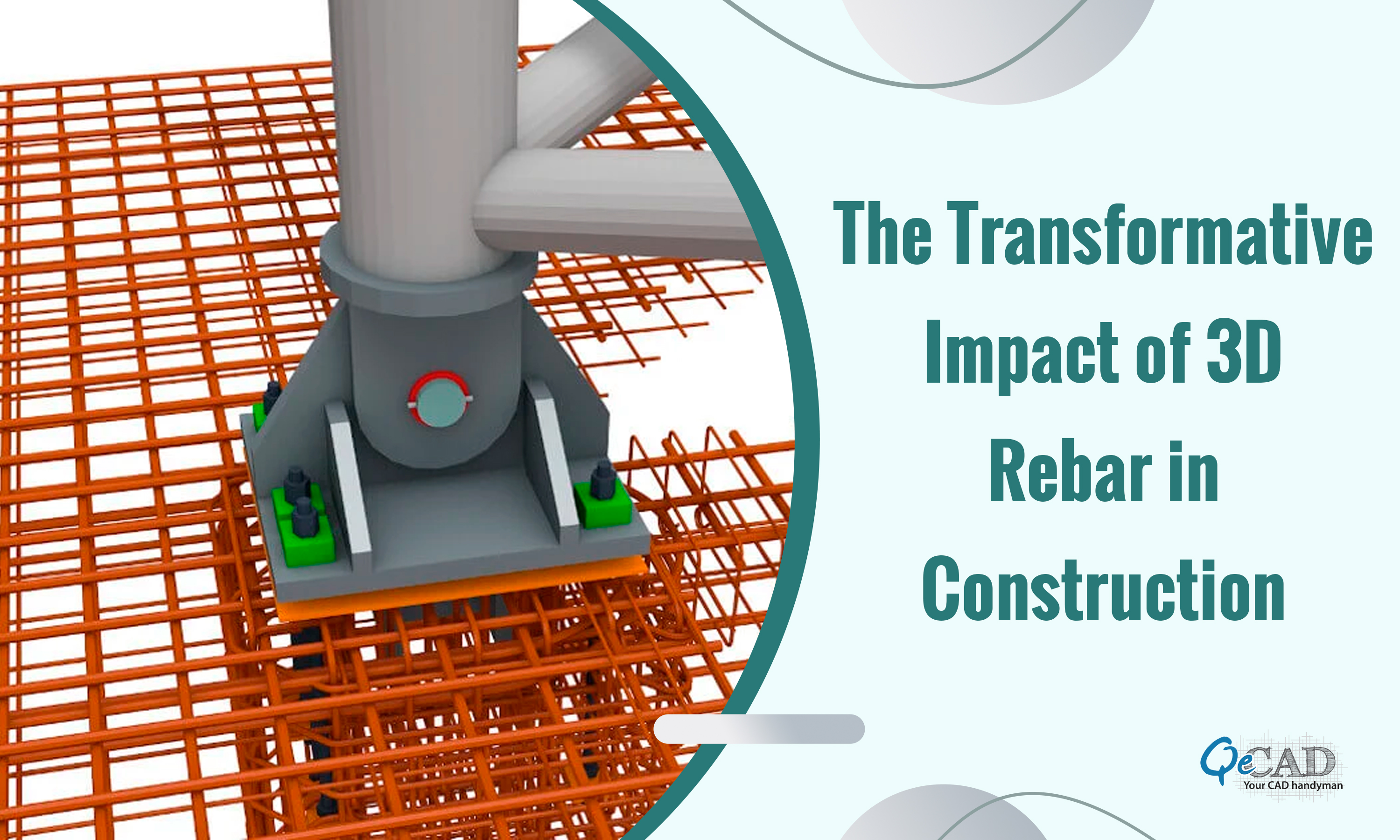
Introduction:
In the construction industry, precision and efficiency are of utmost importance. Integrating cutting-edge technologies is becoming a game-changer for this industry. Among these technological innovations, 3D Rebar Modeling Services stands out as a powerful tool in transforming the approach to planning and executing construction projects. This revolutionary technology is not just a fancy addition; but a fundamental shift towards an enhanced accuracy, a streamlined process, and a cost-effective construction.
In this blog post, we will dig into the depths of 3D rebar modeling, exploring its benefits and the revolutionary impact it has on construction projects.
Understanding 3D Rebar Modeling:
Rebar detailing which is a subset of Structural Steel Detailing Services forms as a critical aspect of construction, ensuring the structural integrity and durability of a building. Traditionally, this process was carried out using 2D drawings, leaving some room for interpretation and the potential for errors. 3D rebar modelling, on the other hand, takes this detailing to a whole new dimension.
The 3D rebar modeling involves creating a three-dimensional digital representation/illustration of the reinforcement elements within a steel structure. This includes the placement, sizing, and orientation of rebars in a highly accurate virtual environment. This 3D model provides a comprehensive visualization of the entire reinforcement framework, offering a holistic view that was previously unattainable with 2D drawings.
Benefits of 3D Rebar Modeling:
1) Enhanced Visualization: One of the primary advantages of 3D rebar modeling is the ability to visualize the entire reinforcement structure in a realistic and detailed manner. This visual clarity reduces the likelihood of errors and misinterpretations that can occur with traditional 2D drawings. Engineers, architects, and contractors can now have a unified understanding of the project, leading to better collaboration and communication.
2) Improved Accuracy and Precision: Precision stands as the fundamental pillar for triumph in construction projects. 3D rebar modeling eliminates the guesswork associated with 2D drawings, ensuring accurate placement and sizing of reinforcement elements. This enhanced accuracy translates into a reduced margin of error, minimizing the risk of structural issues and subsequent rework. The outcome is a building structure that is stronger and more dependable.
3) Efficient Clash Detection: Construction projects involve the integration of various systems and components. Clash detection – identifying conflicts or interferences between different elements – is a critical aspect of project planning. 3D rebar modeling enables efficient clash detection, allowing project teams to identify and resolve potential conflicts before construction begins. This proactive approach minimizes delays and costly modifications during the construction phase.
4) Streamlined Construction Processes: The transition from 2D drawings to 3D rebar modeling brings about a paradigm shift in the construction workflow. With a comprehensive digital model, construction teams can streamline processes such as material estimation, fabrication, and on-site assembly. The increased efficiency not only speeds up project schedules but also leads to cost savings.
5) Facilitates Collaborative Design: Collaboration among different stakeholders is crucial in the construction industry. 3D rebar modeling serves as a collaborative platform, allowing architects, engineers, contractors, and other project contributors to work together seamlessly. Changes can be made in real-time, and everyone involved can visualize the impact, fostering a more integrated and efficient design and construction process.
6) Optimized Resource Utilization: Efficient use of resources is a key factor in the success of any construction project. 3D rebar modeling enables better resource planning by providing a detailed overview of material requirements. The streamlined optimization not only minimizes waste but also plays a role in promoting sustainable construction practices.
Conclusion:
The power of 3D rebar modeling in construction projects cannot be overstated. It has emerged as a transformative technology, revolutionizing the way reinforcement detailing is approached. The enhanced visualization, accuracy, and collaborative potential of 3D rebar modeling have positioned it as a cornerstone in modern construction practices.
As the industry continues to embrace technological advancements, the adoption of 3D rebar modeling is not just a trend but a necessity. It empowers construction professionals to build with unprecedented precision, efficiency, and confidence, laying the foundation for a future where structures are not just functional but truly resilient and sustainable. The era of 3D rebar modeling is here, and it’s reshaping the skyline of construction.
